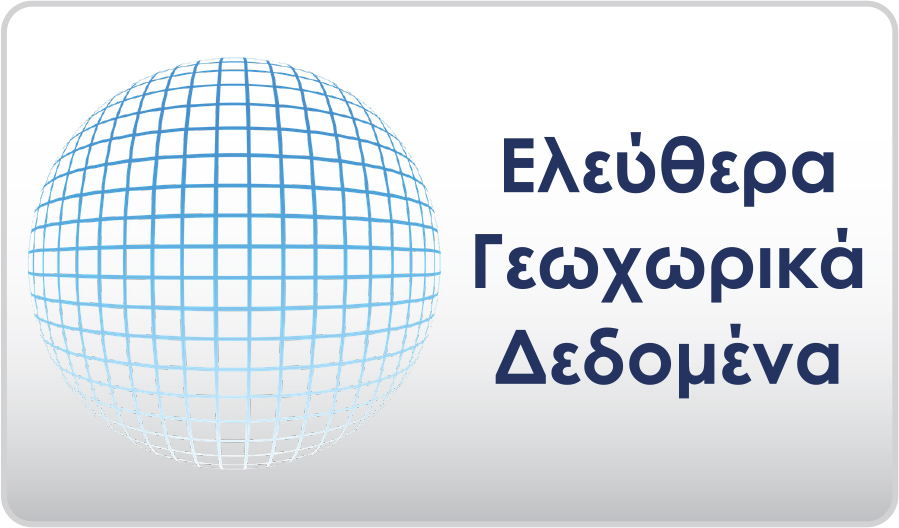Δημοσιεύσεις
Εισήγηση του επίτιμου Αρχηγού ΓΕΝ Ναυάρχου εα Γεωργίου Γιακουμάκη για το ομότιτλο βιβλίο του αρχιτέκτονα Κωνσταντίνου Δημητούλη σε εκδήλωση που οργάνωσε ο Οργανισμός Λιμένων Νομού Ευβοίας (ΟΛΝΕ) και έλαβε χώρα στο Αμφιθέατρο της Περιφερειακής Ενότητας Ευβοίας στις 9 Ιανουαρίου 2023.
Στο κείμενο εξιστορείται η ζωή και το έργο του Ναυάρχου του Βρεττανικού Ναυτικού Arthur Lukis Mansell, ο οποίος χαρτογράφησε την Ανατολική Μεσόγειο στα μέσα του 19ου αιώνα.
Διαβάστε την εισήγηση ΕΔΩ
Ioannis Mintourakis
I. Mintourakis: School of Rural and Surveying Engineering, National Technical University of Athens, Zografou,15780, Greece, E-mail: mintioan@survey.ntua.gr
When processing satellite altimetry data for Mean Sea Surface (MSS) modelling in coastal environments many problems arise. The degradation of the accuracy of the Sea Surface Height (SSH) observations close to the coastline and the usually irregular pattern and variability of the sea surface topography are the two dominant factors which have to be addressed. In the present paper, we study the statistical behavior of the SSH observations in relation to the range from the coastline for many satellite altimetry missions and we make an effort to minimize the effects of the ocean variability. Based on the above concepts we present a process strategy for the homogenization of multi satellite altimetry data that takes advantage of weighted SSH observations and applies high degree polynomials for the adjustment and their unification at acommon epoch. At each step we present the contribution of each concept to MSS modelling and then we develop a MSS, a marine geoid model and a grid of gravity Free Air Anomalies (FAA) for the area under study. Finally, we evaluate the accuracy of the resulting models by comparison sto state of the art global models and other available data such as GPS/leveling points, marine GPS SSH’s and marine gravity FAA’s, in order to investigate any progress achieved by the presented strategy.
Read the paper HERE
I. Mintourakis*, G. Panou, and D. Paradissis
I. Mintourakis: School of Rural and Surveying Engineering, National Technical University of Athens, Zografou,15780, Greece, E-mail: mintioan@survey.ntua.gr
G. Panou, D. Paradissis: School of Rural and Surveying Engineering,National Technical University of Athens, Zografou, 15780, Greece
Precise knowledge of the oceanic Mean Dynamic Precise knowledge of the oceanic Mean DynamicTopography (MDT) is crucial for a number of geodetic applications, such as vertical datum unification and marine geoid modelling. The lack of gravity surveys over many regionsof the Greek seas and the incapacity of the spaceborne gradiometry/gravity missions to resolve the small and medium wavelengths of the geoid led to the investigation of the oceanographic approach for computing the MDT. We compute two new regional MDT surfaces after averaging, for given epochs, the periodic gridded solutions of the Dynamic Ocean Topography (DOT) provided by two ocean circulation models. These newly developed regional MDT surfaces are compared to three state-of-the artmodels, which represent the oceanographic, the geodetic and the mixed oceanographic/geodetic approaches in the implementation of the MDT, respectively. Based on these comparisons, we discuss the differences between the three approaches for the case study area and we present some valuable findings regarding the computation of the regional MDT. Furthermore, in order to have an estimate of the precision of the oceanographic approach, we apply extensive evaluation tests on the ability of the two regional ocean circulation models to track the sea level variations by comparing their solutions to tide gauge records and satellite altimetry Sea Level Anomalies (SLA) data. The overall findings support the claim that, for the computation of the MDT surface due to the lack of geodetic data and to limitations of the Global Geopotential Models(GGMs) in the case study area, the oceanographic approach is preferable over the geodetic or the mixed oceanographic/geodetic approaches.
Read the paper HERE
I.Mintourakis and D. Delikaraoglou
I. Mintourakis
Department of Surveying Engineering,
National Technica lUniversity of Athens,
Zografos 15780, Greece
E-mail: mintioan@survey.ntua.gr
We have conducted various experiments of sea surface height (SSH) measurements in Greece’s Aegean Sea using on-board kinematic GPS recordings and the KMSS04 satellite altimetry-derived mean sea surface for comparison. This region is of particularinterest because of strong crustal movements due to intense tectonic activity that create significant local geoid variations. In this paper, we report on the results of separate SSH surveys that were conducted in three test areas in the Aegean Sea. Ship borne GPS data were collected together with GPS data simultaneously collected at nearby mainland reference stations. These high rate data were processed in kinematic mode using scientific GPS software and related to SSH observations, thus allowing us to obtain maps of the instantaneous sea surface, which was estimated with a precision at the level of a few centimeters. Tidal recordings from nearby tidal stations provided us with the required tidal corrections for the reduction of the GPS-derived SSHs to mean sea level (MSL). Following a filtering process, a cross over adjustment and gridding of the pointwise SSH observations in each test area, local maps of the mean sea surface(MSS) were obtained, which can be compared with the available KMSS04 global solution for the MSS. To examine further the MSS-related results that we observed in these experiments, we compared both the GPS-derived and the KMSS04-related MSS with JASON-1 radar altimetry and ICEsat laser altimetry data over the same areas. We show that the SSHs derived from the GPS ship surveys, when carefully analyzed and applying suitable filtering techniques and necessary corrections for the Dynamic Ocean Topography (DOT) can provide enhanced shorter wavelength components of the local geoid. This is illustrated with additional comparisons with the EGM96 and EGM08 global geoid models, in order to reveal any significant differences, mainly in the short wavelength domain, when compared to the aforementioned local geoid models computed from purely GPS-derived SSH data.
Read the paper HERE
Petros Bitsikokos (a), Ioannis Bitsikokos (b)
(a) Military oceanographer (OF-1), Hellenic Navy Hydrographic Service, 229 Av. Mesogeion TGN 1040, Cholargos, pmpitsikokos@gmail.com;
(b) Software Engineer, independent researcher, 14 Agnoston Martiron st. Nea Smirni, Athens Greece, jmpitsikokos@gmail.com
The paper describes and presents preliminary results of a Netcdf Transformer tool, developed under java environment, for calculating and producing underwater Sound Speed Netcdf files. This study has been conducted using E.U. Copernicus Marine Service Information (CMEMS). By combining distinct Salinity and Temperature Netcdf data output from CMEMS, a compatible with low end machines Netcdf calculator is created, suitable for “at sea” calculations of the underwater sound speed. The calculations performed are based on Mackenzie (1981) 9 term formula for underwater sound speed. Products of the calculator are depicted in results. The soundscape / acoustic environment of the area bounded by 36N to 42N and Prime Meridian to 009E is calculated, with the distinct halo-clinic fronts of the area in mind. As input data, monthly mean hind casted average salinity and temperature data are selected for a period of 12 months. The calculator input data are the salinity and temperature Netcdf data outputs of Mediterranean Sea physical reanalysis component (product MEDSEA_REANALYSIS_PHYS_006_004), as made available by CMEMS. The output is a single Netcdf sound speed data file, plotted using NASA’s Panoply software. The use of the calculator, permits the production of Military Oceanography (MILOC) related products, thus allowing the comprehensive and robust identification of the soundscape, therefore directly enhances the Environmental Knowledge and Operational Effectiveness (EKOE) principle for all level commands.
Read the paper HERE
See relevant poster HERE
by Panourgias Siderakos
A dissertation submitted in partial fulfilment of the requirements for the degree of M.Sc. (Oceanography) by instructional course
FACULTY OF NATURAL AND ENVIRONMENTAL SCIENCES
OCEAN AND EARTH SCIENCE, UNIVERSITY OF SOUTHAMPTON
From the ancient years till present, the Aegean Sea has always been a sea with major importance. From famous ancient ship battles to modern trading, it always played an essential role for the whole world. Nowadays, all the above combined with its unique oceanographic conditions and topography, the Aegean Sea has become the field of development for two operational, ocean circulation forecast models, the ALERMO model and the POSEIDON model. In this project, an effort for the validation of both models was originally targeted. However, due to lack of data from the POSEIDON model, the validation was performed only for the ALERMO model. Two months were initially chosen, one in winter and one in summer in order to compare their errors based on the different season. As a result, every forecast of the model was being examined in both resolutions of the model (1/30⁰ and 1/60⁰) for both months. Detailed figures of the forecasts are given, in both months and both resolutions in order for the reader to understand the differences that the model demonstrates in relation to the season. In addition, the Root Mean Square Error is calculated and given for each different case. Finally, from in-situ CTD measurements that took place in the Aegean Sea during 2014 and 2016 from an oceanographic ship of the Greek Navy, vertical temperature and salinity profiles were made in relation to depth in order to see the performance of the model in the water column generally. The most important conclusion of this research project is that the model performs very well with specific defects. Each season has its own defects and the model has permanent errors in specific areas in the Aegean. These areas are the mouth of the Dardanelles Strait and the waters adjacent to the coastline of Greece’s mainland. A significant part of these errors happen probably because of the fact that ALERMO is one-way nested to a larger model that covers the whole Mediterranean Sea and has quite low resolution (1/16⁰). Nevertheless, the development of the model is continuous and the improvements are visible both in its function and its errors. A research with salinity data would be very useful and interesting in the future, as today the daily and monthly data for this region are very poor.
Read the dissertation HERE
Lt Georgios Georgopoulos,
Hellenic Navy Hydrographic Service,
Greece
Function of Water Clarity 29/05/2015
An Airborne Lidar Bathymetry (ALB) system has to cope with a number of limitations. Weather conditions (rainfall, humidity and sea state), together with bottom conditions (slope of the seabed, material type, roughness and density) are of great importance. However, the factor that dominates is water clarity. The attenuation of a beam of light by water results from two independent mechanisms; scattering and absorption. Therefore, turbidity, which is controlled by rivers’ runoffs and winds, wind/wave induced sediment re-suspension, the intensity of coastal human activity, the tidal amplitude and the structure of the water column itself, have the potential to significantly influence the maximum surveyable depth.
Read the article HERE





